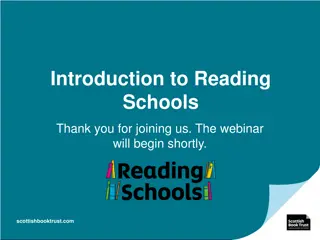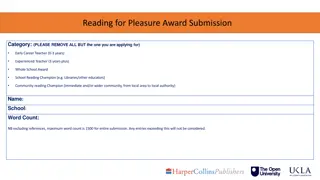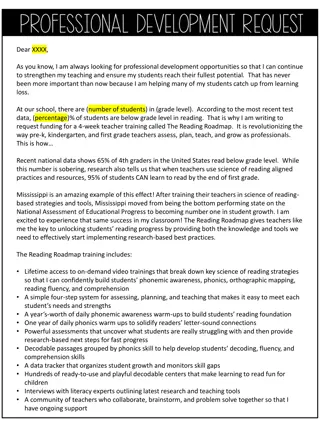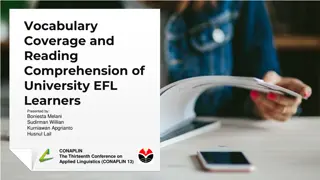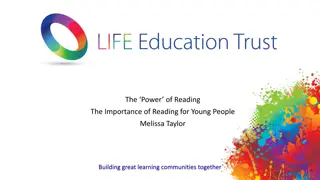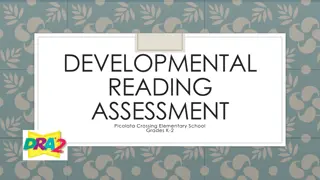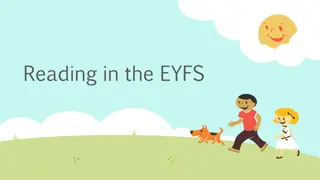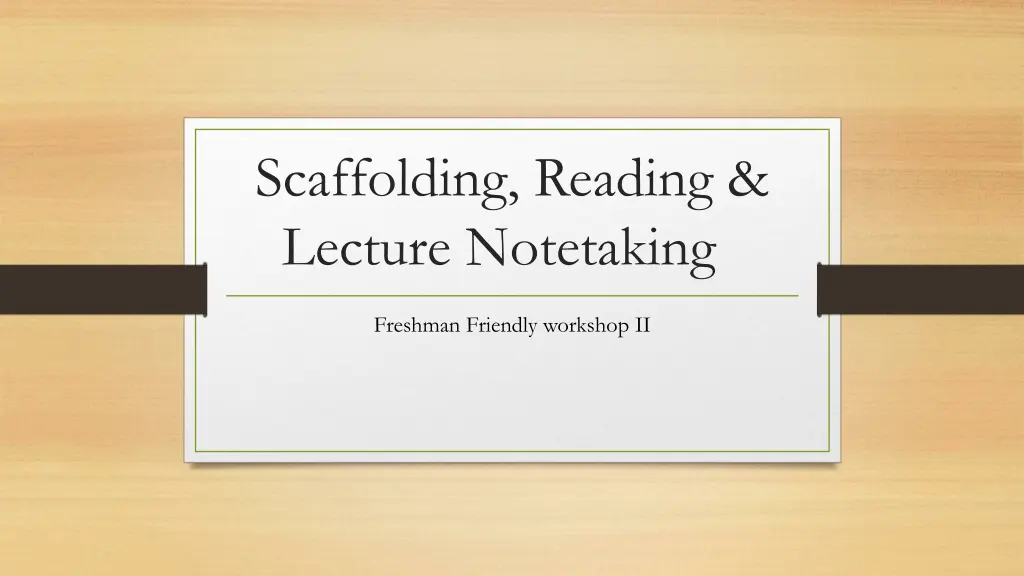
Effective Strategies for Improving Notetaking Skills in Freshman Workshops
Explore practical solutions and guidelines to enhance notetaking skills for freshman students. Learn about the importance of good notetaking, common problems faced, and effective teaching methods. Improve organization, structure, and comprehension of lecture content to boost student success.
Download Presentation

Please find below an Image/Link to download the presentation.
The content on the website is provided AS IS for your information and personal use only. It may not be sold, licensed, or shared on other websites without obtaining consent from the author. If you encounter any issues during the download, it is possible that the publisher has removed the file from their server.
You are allowed to download the files provided on this website for personal or commercial use, subject to the condition that they are used lawfully. All files are the property of their respective owners.
The content on the website is provided AS IS for your information and personal use only. It may not be sold, licensed, or shared on other websites without obtaining consent from the author.
E N D
Presentation Transcript
Scaffolding, Reading & Lecture Notetaking Freshman Friendly workshop II
Guiding Questions How do we get students to reveal their organizational structure? How can we help students build rich, meaningful knowledge structures? How can we translate our expert knowledge organization into a structure students can use?
Whats wrong with their notes Writing down everything the instructor says, free form No organizational structure, hierarchy of ideas Fail to recognize importance cues Failure to use them later (assuming they are usable)
Problems My instructor writes in one column on the board and then erases the info before starting the next column. My instructor stands in front of what he is writing I am an international student and cannot read cursive My teacher speaks really fast We are always racing to get through the ppt, I can t write that fast
Importance of good notetaking Ranks in the top three skills students say they need most in their first year Students who receive training in notetaking capture 60% of critical points versus 37% for untrained students
General guidelines Pause and look how many students are still writing? If playing a video, turn on CC Allow students time to compare notes Make notetaking important Use notes for an activity. Have them answer questions, identify key concepts Students turn in notes and receive points for completeness and organization
Solutions Pitfall #1: Assuming students will be able to identify important information and take useful notes. Note-taking activities can be fraught with problems, particularly if the content is disconnected from prior knowledge. Solution: Provide a skeleton of the lecture info with some key info inserted, some omitted Sample lecture activity
Teach notetaking Discuss / practice / model different methods Cornell https://www.youtube.com/watch?v=iOLdxZC3Yp8 Mindmaps
Solutions cont. Pitfall #2: Assuming students know how to "study." The truth is that many students do not know how to go about learning material on their own. Solution: Pre-exam, use notes for in-class review . Have students create a 3x5 notecard to be used for exam, only from notes. Solution: Introduce different ways of using their notes: quizzing themselves with note cards, playing review games, and creating test questions for one another. Practice vocabulary together every day. Work on creating mnemonics to remember difficult sequences. Help students realize that learning is a process, not a night-before-the-test memorization activity. Solution: Postexam - For frequently missed exam questions, have everyone find the date when that content was covered and see what they have in their notes that relates to the question.
Reading and notetaking Pitfall #1: Assuming students will be able to identify important information and take useful notes. Note-taking activities can be fraught with problems, particularly if the text is above the student s reading level. Often students start writing immediately, taking wild guesses about what might matter. They blindly gather bits and pieces without a sense of how the facts relate to one another.
Reading solutions Walk students through a Preview of the chapter Identify Chapter objectives, title, headings, visual elements, chapter summary *Give them questions to answer along with read chapter 5 for next class / Review questions to be answered in advance of starting to read (this is also a good test strategy to teach) Have them relate some part of the chapter to an active assignment. Example Social media used to support business https://www.facebook.com/search/top/?q=mcdonald's
More on notetaking and reading Encourage students to write questions (much like Cornell lecture notes) Give students a partial outline and have them fill in the missing parts as they read Help students break down reading load, map on calendar the reading schedule Have students answer questions in class ONLY from their reading notes
Reciprocal teaching Predicting Questioning Summarizing Clarifying Connecting
Other Jigsaw reading / notetaking Student Reflection exercise
References Reference: Cohen, D., Kim, E., Tan, J., and Winkelmes, M. (2013). A note- restructuring intervention increases students exam scores. College Teaching, 61 (Summer), 95-99. Billmeyer, R. & Barton, M.L. (2002), Teaching reading in the content areas. Midcontinent regional educational laboratories.

